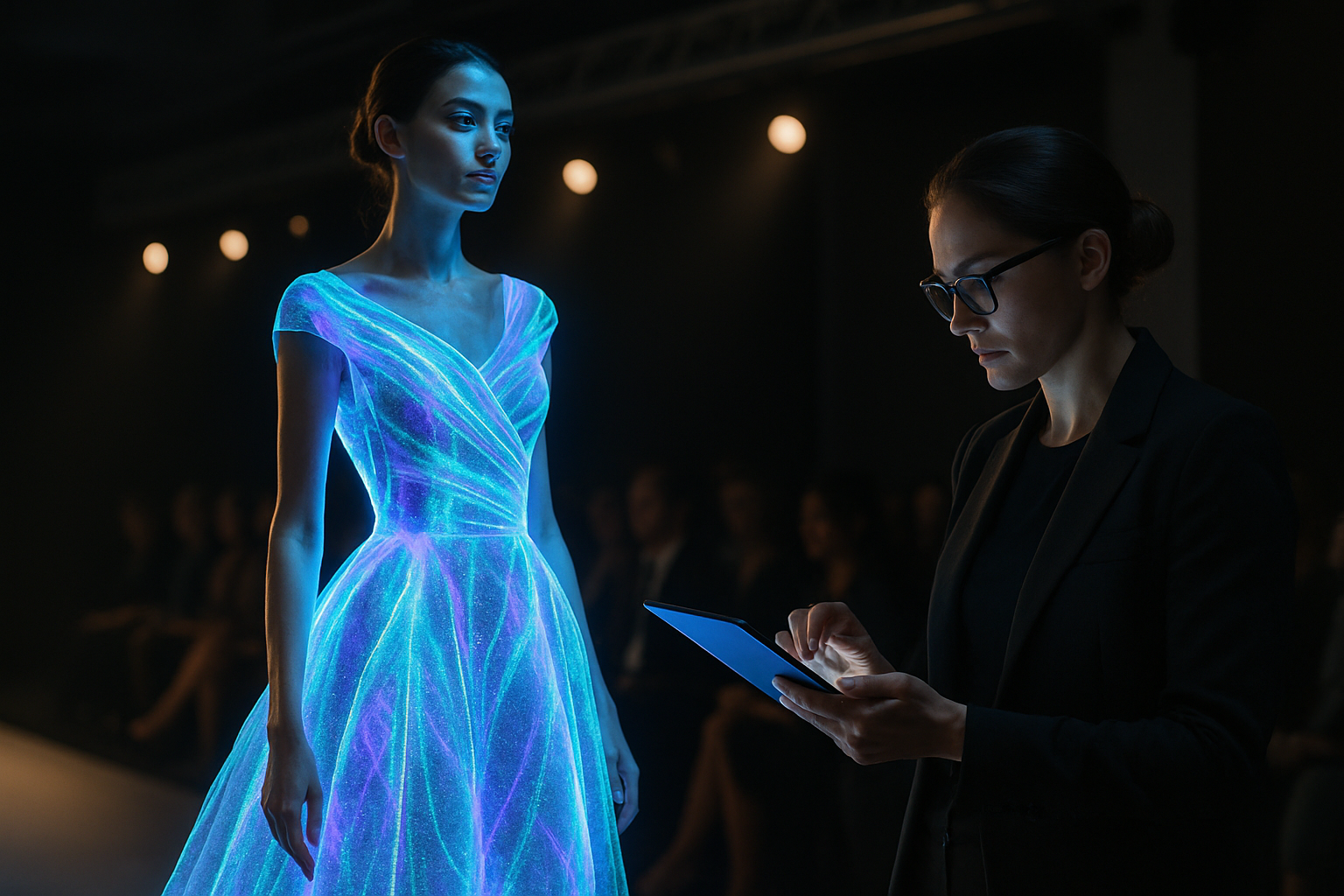Holographic Haute Couture: Fashion's Digital Frontier
In a world where pixels and fabric intertwine, the fashion industry stands on the precipice of a digital revolution. Holographic haute couture, once a figment of science fiction, is rapidly becoming a tangible reality. This groundbreaking fusion of technology and sartorial artistry is not just changing how we perceive clothing, but also redefining the very essence of fashion itself. From runways to retail, holographic designs are captivating audiences and challenging traditional notions of materiality in style.

From Concept to Catwalk
Today’s holographic haute couture represents a quantum leap forward. Cutting-edge designers are creating fully realized garments that exist in both physical and digital realms simultaneously. These pieces utilize advanced projection mapping and wearable technology to overlay intricate, dynamic patterns onto base fabrics. The result is clothing that can transform in real-time, shifting colors, textures, and even shapes at the wearer’s whim.
The Technology Behind the Trend
At the heart of holographic fashion lies a complex interplay of technologies. High-resolution projectors, motion sensors, and proprietary software work in concert to create the illusion of three-dimensional, changeable garments. Some designs incorporate flexible LED panels or electroluminescent wires, while others rely on smart fabrics that can alter their properties in response to electrical stimuli or environmental changes.
Sustainability and the Digital Wardrobe
One of the most compelling aspects of holographic fashion is its potential to address sustainability concerns in the industry. By allowing a single garment to take on multiple appearances, it reduces the need for excessive production and consumption. Fashion houses are exploring the concept of digital wardrobes, where customers can purchase virtual designs to be projected onto basic, reusable physical garments.
The Cultural Impact of Holographic Couture
Holographic fashion is more than just a technological marvel; it’s a cultural phenomenon that’s reshaping our relationship with clothing. It blurs the lines between reality and virtuality, challenging our perceptions of self-expression and identity. Celebrities and influencers are embracing this new form of fashion, using it to create unforgettable red carpet moments and social media spectacles.
Challenges and Controversies
Despite its potential, holographic fashion faces several hurdles. Critics argue that it prioritizes spectacle over substance, potentially devaluing traditional craftsmanship. There are also concerns about the technology’s accessibility and the digital divide it might create in the fashion world. Additionally, questions of intellectual property and design rights in the digital realm remain largely unresolved.
The Future of Fabric and Light
As holographic technology continues to evolve, so too does its integration with traditional fashion elements. Designers are experimenting with hybrid creations that combine physical textiles with digital overlays, creating garments that are both tangible and ephemeral. This fusion opens up new possibilities for customization and personal expression, allowing wearers to adapt their clothing to different contexts instantly.
Economic Implications for the Fashion Industry
The rise of holographic haute couture is sending ripples through the fashion economy. Traditional supply chains are being disrupted as digital designs can be distributed and “worn” globally without physical production or shipping. This shift is forcing fashion brands to rethink their business models and invest in new technologies to stay relevant in an increasingly digital marketplace.
Holographic Fashion in Everyday Life
While haute couture leads the charge, the influence of holographic fashion is beginning to trickle down to ready-to-wear collections. Consumer-grade wearable projectors and augmented reality glasses are making it possible for everyday fashionistas to experiment with digital overlays on their clothing. This democratization of holographic fashion promises to revolutionize personal style on a mass scale.
In conclusion, holographic haute couture stands at the vanguard of fashion’s digital frontier. It represents not just a new aesthetic, but a fundamental reimagining of what clothing can be and do. As technology continues to advance and creative boundaries are pushed, we can expect holographic fashion to play an increasingly prominent role in shaping the future of style, sustainability, and self-expression. The fusion of light and fabric is more than a passing trend; it’s the dawn of a new era in fashion history.





